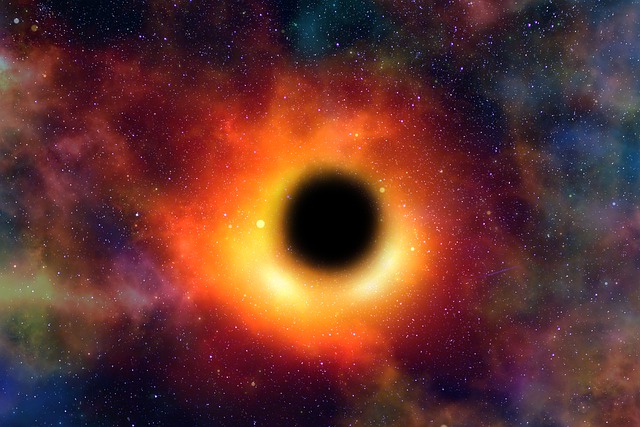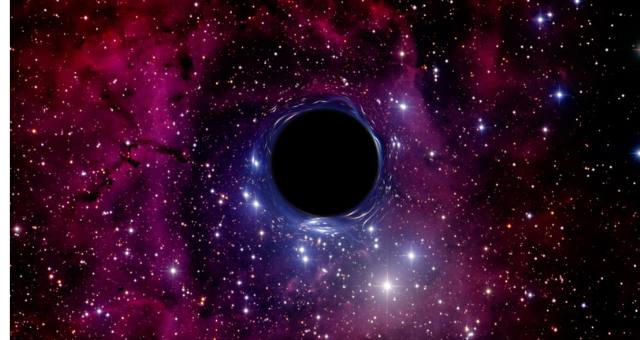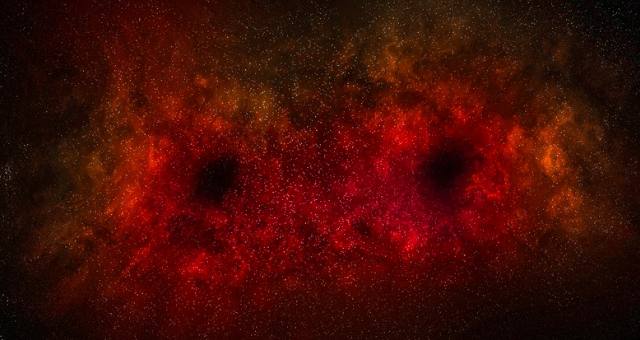*This post may contain affiliate links. This means we may make a commission if you purchase an item using one of our links*
Black holes are mysterious objects that can form when massive stars collapse. While they are usually solitary, there is a possibility for two black holes to orbit each other in a phenomenon known as a binary black hole system. Here, two companion black holes interact with each other through gravity and form an orbit.
Continue reading to discover why black holes orbit each other, how often this occurs, and whether or not an eventual collision is inevitable.
How Would Black Holes Orbit Each Other?
Table of Contents

The interactions between two orbiting black holes can be complex and difficult to predict. In some cases, the two companion black holes may merge and form an even bigger single black hole. Such events are believed to be the origin of gravitational waves, which were detected for the first time in 2015 by the Laser Interferometer Gravitational-Wave Observatory (LIGO).
Scientists divide these binary black hole systems into two main categories. “Stellar” binary black holes form from high-mass binary star systems, while binary “supermassive” black holes are more likely to result from a galactic merger.
A galactic merger is one of the most violent interactions between two galaxies. It occurs when two galaxies collide and merge into a single, larger galaxy. During this process, stars, gas, dust, and dark matter all mix to form a new object much bigger than the original galaxies.
This violent interaction can cause new stars to be born, as well as supermassive black holes that can hugely impact their surroundings. Galactic mergers are some of the most spectacular events in the Universe and can provide valuable insight into how galaxies form and evolve.
How Fast Would Black Holes Orbit Each Other?

One of the most interesting questions is how fast black holes orbit one another. Astronomers have studied this question extensively, and they have found that black holes can orbit each other at incredibly high speeds. Some black hole pairs can orbit at velocities of up to 50% of the speed of light!
We can separate the life cycle of a binary black hole system into three main stages: inspiral, merger, and ringdown.
The inspiral stage of a binary black hole’s life cycle is when they slowly spiral towards each other, emitting gravitational waves as they do so. As this happens, the energy released by the system can be detected from Earth using powerful telescopes and detectors.
This energy release causes the black holes to slow down, meaning they are less resistant to the gravity of their partner and will be drawn gradually closer over time.
The merger and ringdown stages describe the process of the two black holes colliding when gravitational wave emissions peak and the single black hole begins to “ring.” Still, once the black holes collide within the photon sphere, most waves travel to the event horizon while the amplitude of escaping waves reduces.
Is It Common For Black Holes To Orbit Each Other?

It’s hard for us to determine how common it is for black holes to orbit one another when it is so difficult to observe these mysterious entities in the first place.
Even though black holes have captured the imagination of scientists and laypeople alike for centuries, they remain one of the Universe’s most mysterious and elusive objects. This is because it is challenging to observe them directly due to their immense gravity, which prevents any light from escaping. As a result, we must rely on indirect methods such as gravitational lensing and X-ray observations to study them.
Only two binary black hole systems have been discovered to date. In September 2015, scientists detected gravitational waves at LIGO in Washington. The existence of these waves was first demonstrated in the 1970s when scientists Taylor and Hulse discovered a binary system of a pulsar orbiting a neutron star.
But it wasn’t until this discovery of the 90s that gravitational waves were recorded for the first time by measuring the minor disturbances they created in space and time as they passed through the Earth.
A black hole may not emit light, but its gravity is able to gather disks of hot gas, which it then ejects into space in jets that can stretch for several million light years.
If these jets originate from a supermassive black hole and point toward Earth, they are known as blazars, and it was a blazar called PKS 2131-021 that caught the eye of scientists. Why? Because this blazar demonstrated a regular pattern of brightness fluctuation, suggesting another influence was acting on it.
Scientists now believe that these fluctuations are caused by a second black hole which exerts gravitational force onto the original hole each time they pass (which occurs roughly once every two years).
Would Black Holes Eventually Merge When Orbiting Each Other?
Scientists’ observations indicate that black holes will eventually merge when orbiting one another.
The theory of general relativity says that a pair of black holes orbiting each other will gradually lose energy through the emission of gravitational waves. And it’s this gradual speed reduction that means the entities will travel closer to one another over time. These binary systems can take hundreds of millions of years to lock into orbit and travel toward one another.
Still, when they finally approach one another, they speed up, and in the last fraction of a second, as the two black holes collide, they will be traveling up to half the speed of light.
Summary
Binary black holes are a relatively recent scientific development that has taken years of hard work to prove. Still, we can confirm that these orbiting giants exist within our Universe and observe them indirectly using gravitational waves. While these formations take millions of years to form, they will ultimately collide one day and create one giant black hole.
References
Binary black hole – Wikipedia
Astronomers Find Two Giant Black Holes Spiraling Toward a Collision (nasa.gov)
News | Gravitational Waves Detected 100 Years After Einstein’s Prediction | LIGO Lab | Caltech

